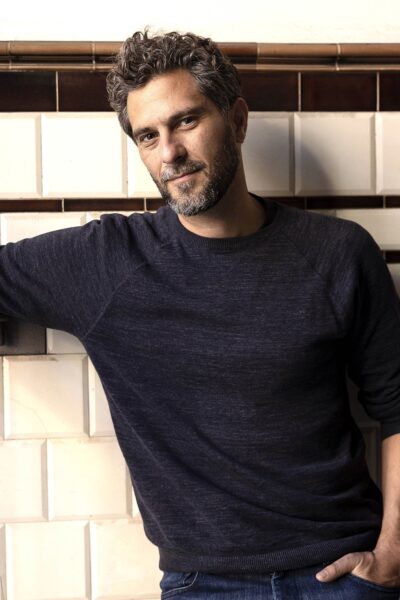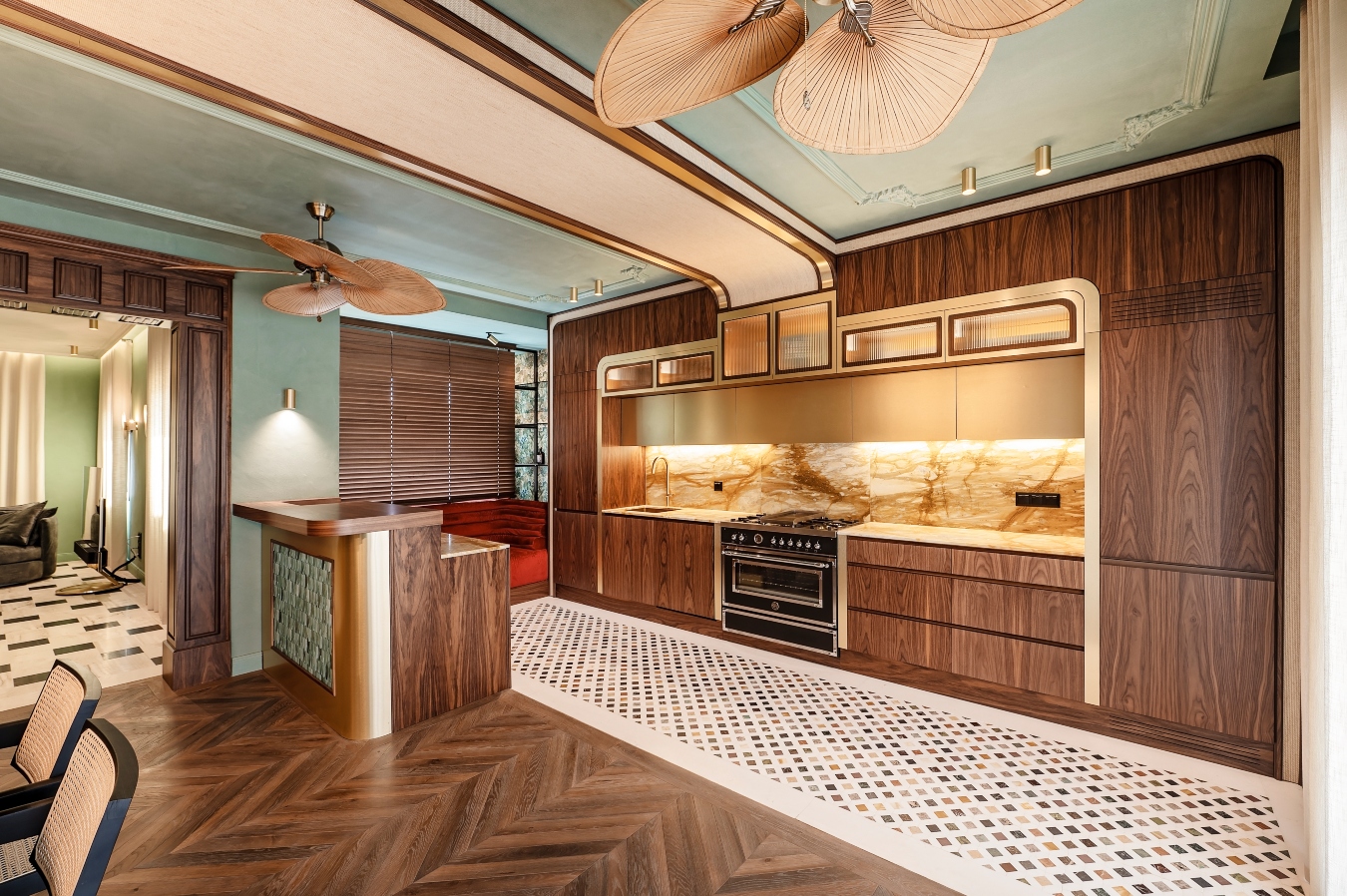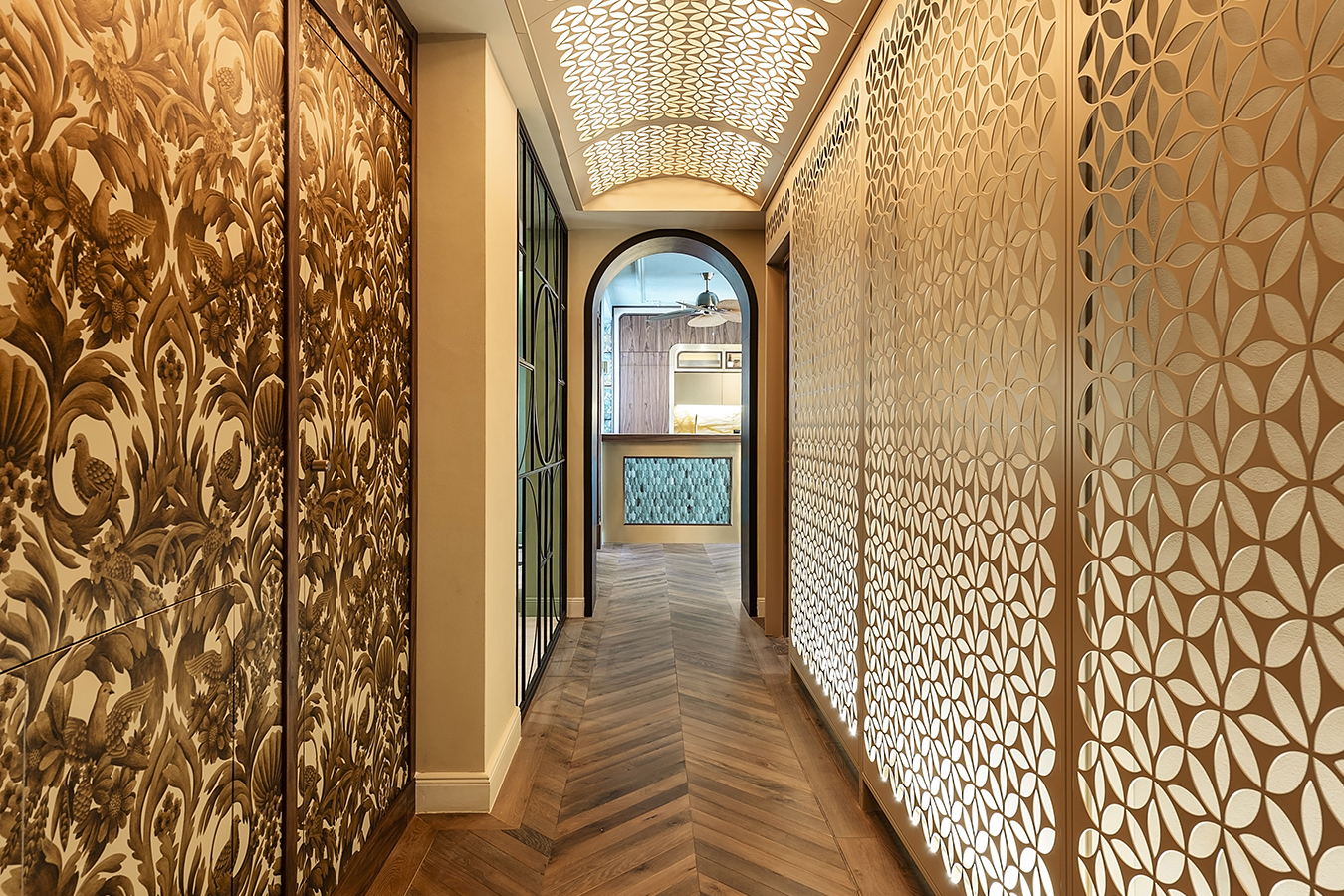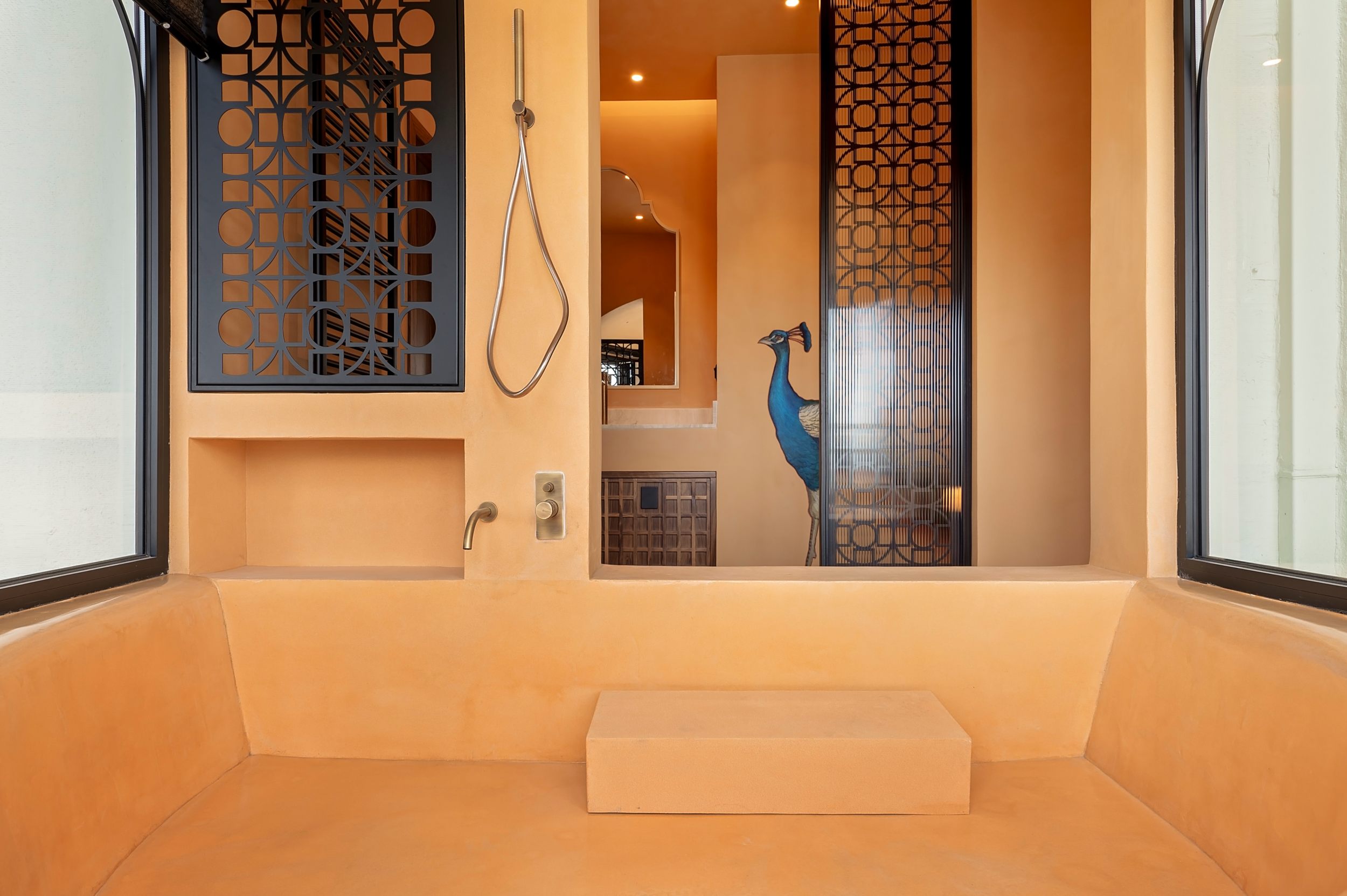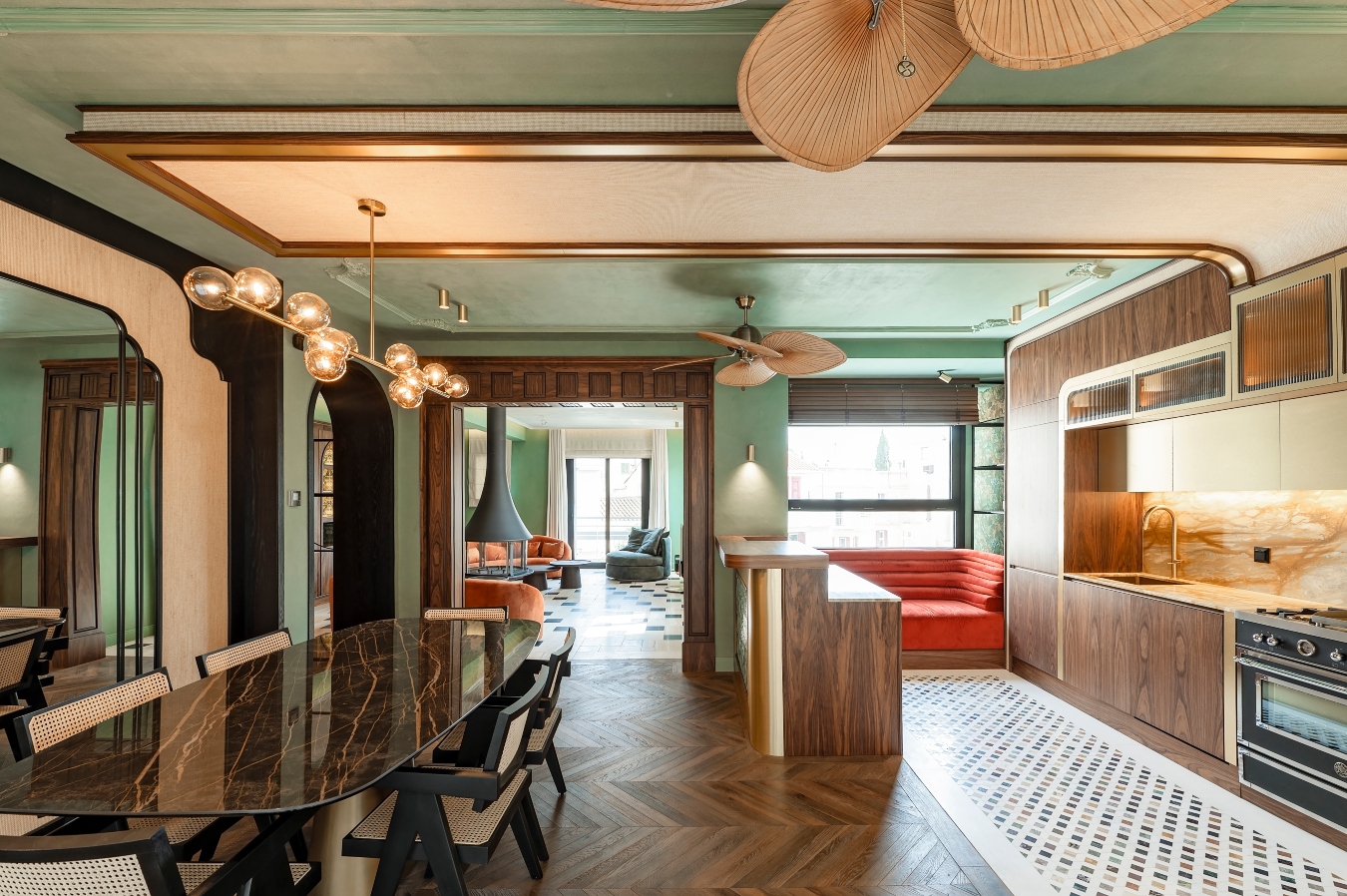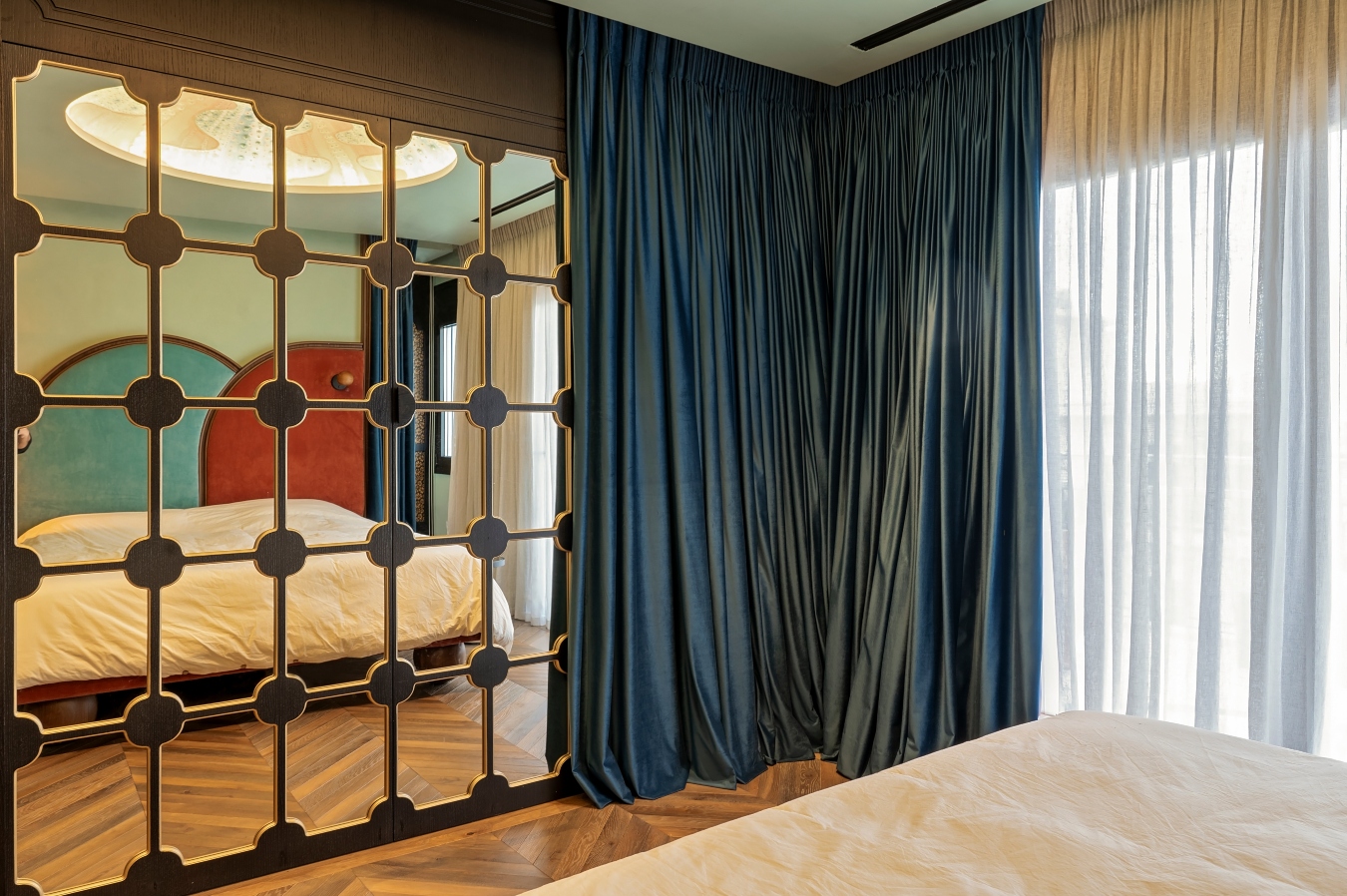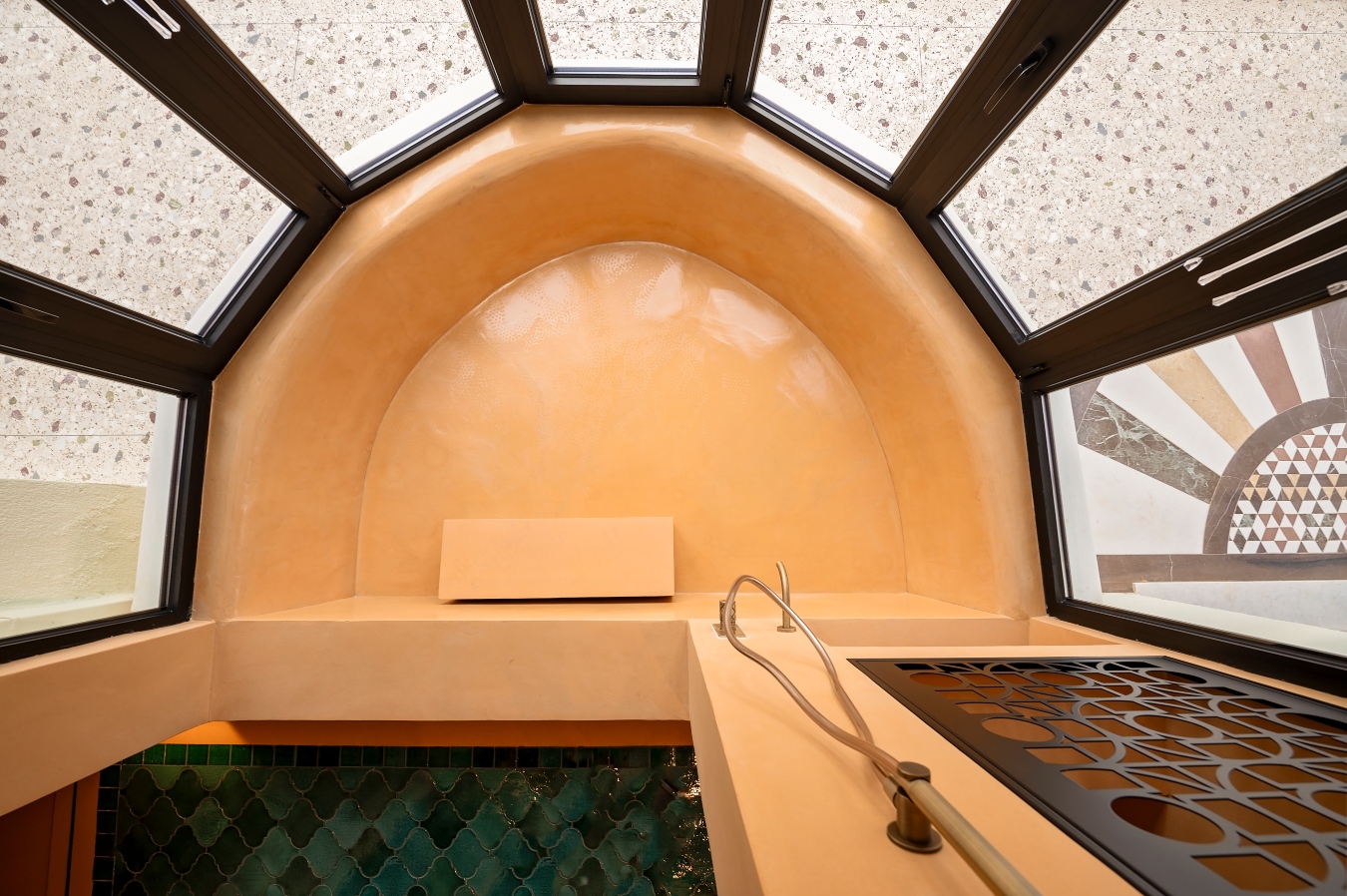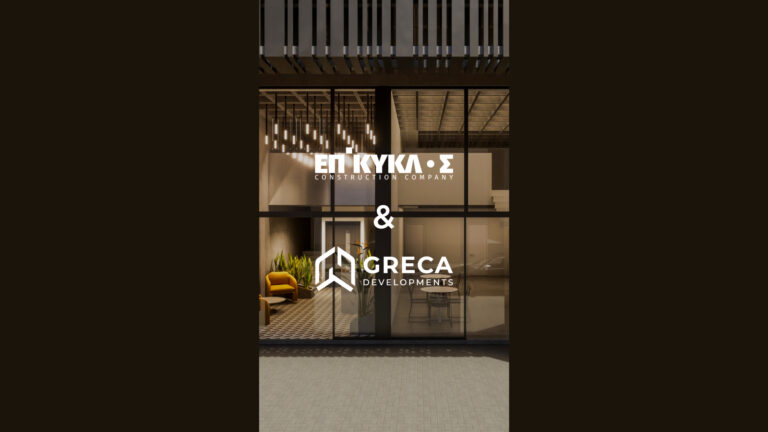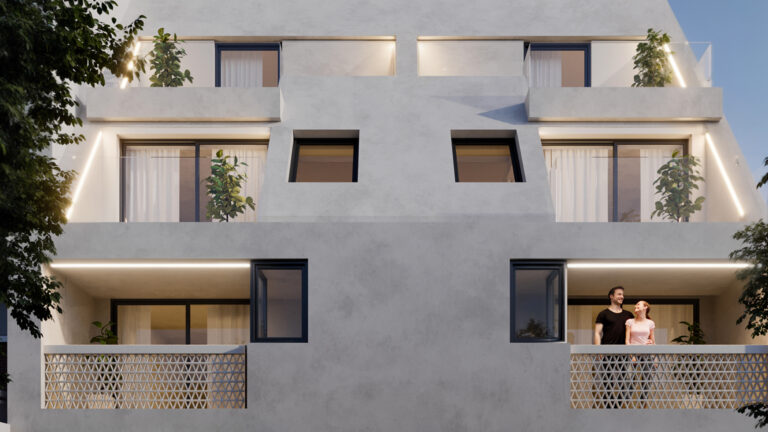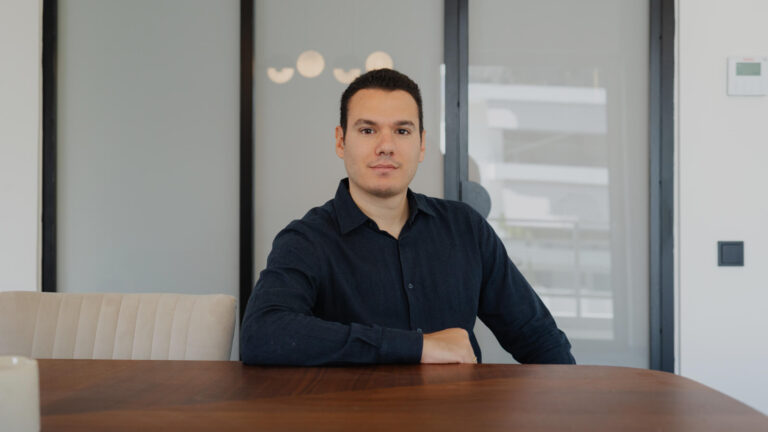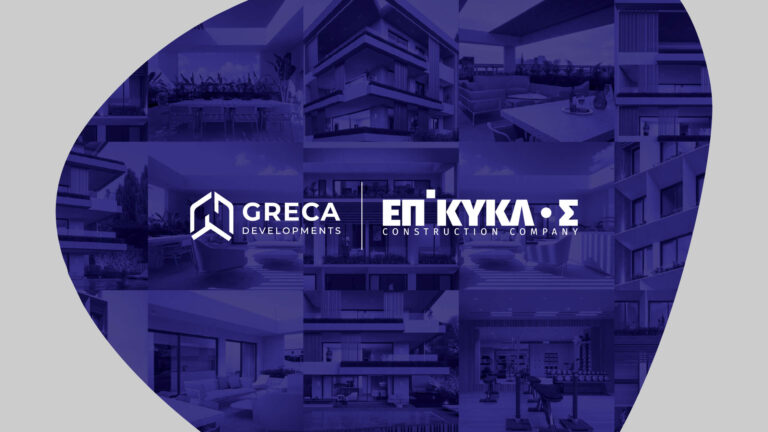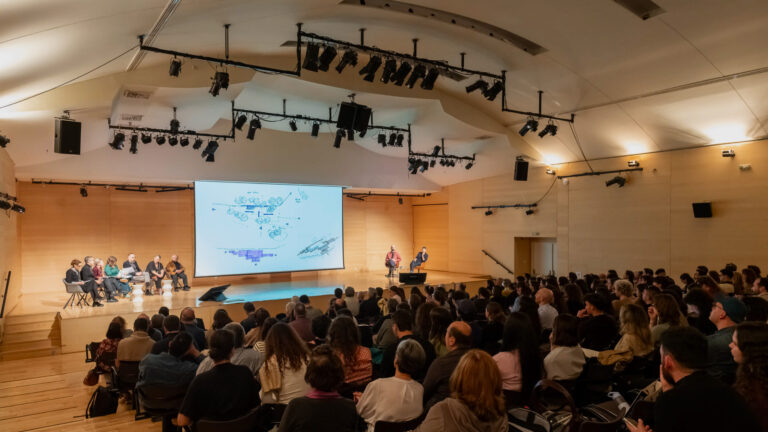How was the floor plan formed and what elements document the originality of the project?
The thread of the narrative starts from the moment you enter the apartment. The corridor is the passageway from the “normal” Athenian space to the environment of the apartment, through a unique visual, aesthetic and kinetic scenario. The various spaces each have their own atmosphere while the mood is set right from the entrance, with the claustra tunnel illuminated by the scenographic lighting, foreshadowing what is about to follow.
The floor plan of the penthouse was treated in such a way that it intersects the residence in two zones, the shared and the private area. As privacy was an important element in the owners’ brief, the visitor who enters the apartment and is not familiar with the layout, is led directly to the shared areas.
Crossing the impressive entrance hall, the first visual contact in the background is with the kitchen area and the shared dining room. Different elements and details create a scene with strong references to Cuba and its culture.
On the left, the living room can be seen through a special metal construction which alludes to works by Moralis. In the middle, the aerial fireplace dominates, while the sitting areas are set around it. At the back, a large library covers the entire wall, aiming to transform the space into a reading room, a retreat. The distinctive chess marble flooring and the hidden lighting complete the special setting of this space.
On the other side of the apartment there is the private zone, which includes two bedrooms and a space with a dual use of both a study and a guest room. In the study, the space’s marble cladding is the main feature, referring to the material of the Parthenon as seen through the study window. The sofa turns into a bed ready to welcome a guest, while the study furniture is reclinable with an electric motor.
The master bedroom follows the directorial approach of the apartment, with its own distinct theatrical character. Large, heavy motorized drapes can cover all walls if necessary, offering the space additional privacy. At the back of the bedroom there is a walk-in closet, with the possibility to be joined or isolated from the rest of the space.
A special lighting dome has been placed in the centre of the bedroom above the bed, simulating the shape of a sea urchin shell. This element is a reference to the overall design concept of the apartment, and comes directly from the many and inspiring dialogues with the exceptional owners. The urchin dome became the constant symbol of what we want from this space: structure, organization but also multiplicity, richness and generosity of form.
The room has an en suite bathroom, which has its own distinct identity and a unique feature. It has a semi-circular ledge that utilizes part of the penthouse terrace, while the windows open and close, giving it the possibility to be joined with or isolated from it. Its general aesthetics, colours and materials resemble a hammam.

